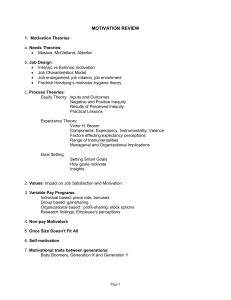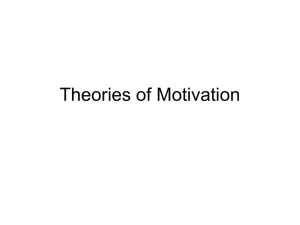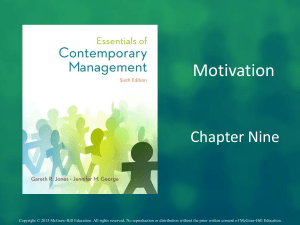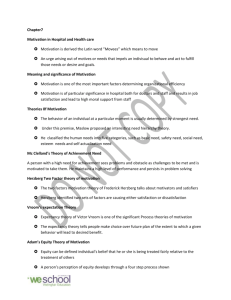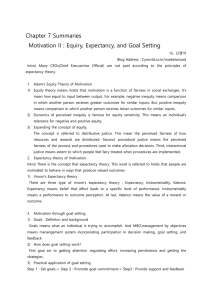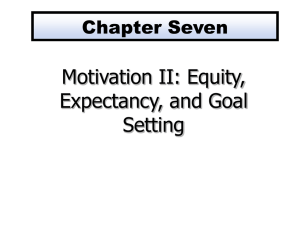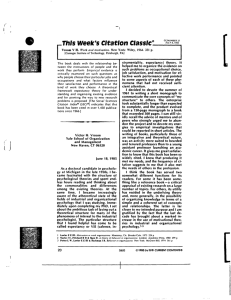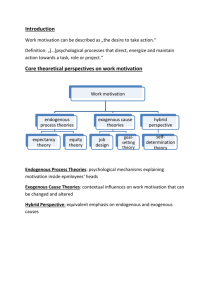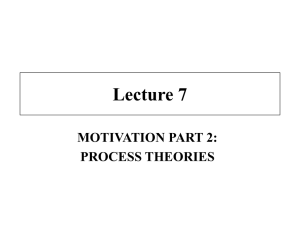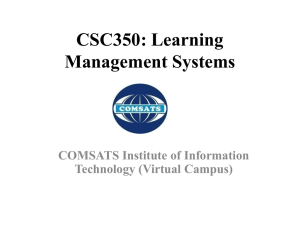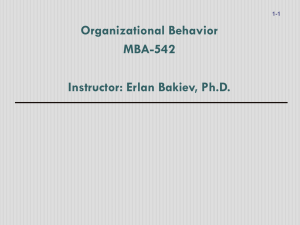Feb 6 - Nora P. Reilly, Ph.D.
advertisement
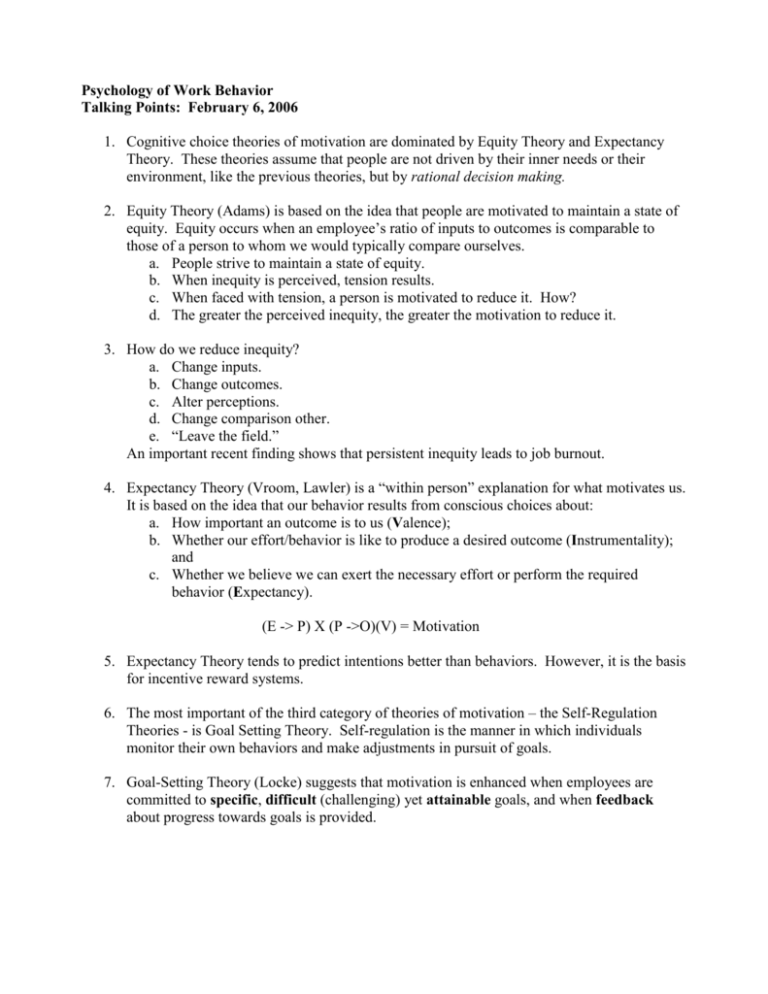
Psychology of Work Behavior Talking Points: February 6, 2006 1. Cognitive choice theories of motivation are dominated by Equity Theory and Expectancy Theory. These theories assume that people are not driven by their inner needs or their environment, like the previous theories, but by rational decision making. 2. Equity Theory (Adams) is based on the idea that people are motivated to maintain a state of equity. Equity occurs when an employee’s ratio of inputs to outcomes is comparable to those of a person to whom we would typically compare ourselves. a. People strive to maintain a state of equity. b. When inequity is perceived, tension results. c. When faced with tension, a person is motivated to reduce it. How? d. The greater the perceived inequity, the greater the motivation to reduce it. 3. How do we reduce inequity? a. Change inputs. b. Change outcomes. c. Alter perceptions. d. Change comparison other. e. “Leave the field.” An important recent finding shows that persistent inequity leads to job burnout. 4. Expectancy Theory (Vroom, Lawler) is a “within person” explanation for what motivates us. It is based on the idea that our behavior results from conscious choices about: a. How important an outcome is to us (Valence); b. Whether our effort/behavior is like to produce a desired outcome (Instrumentality); and c. Whether we believe we can exert the necessary effort or perform the required behavior (Expectancy). (E -> P) X (P ->O)(V) = Motivation 5. Expectancy Theory tends to predict intentions better than behaviors. However, it is the basis for incentive reward systems. 6. The most important of the third category of theories of motivation – the Self-Regulation Theories - is Goal Setting Theory. Self-regulation is the manner in which individuals monitor their own behaviors and make adjustments in pursuit of goals. 7. Goal-Setting Theory (Locke) suggests that motivation is enhanced when employees are committed to specific, difficult (challenging) yet attainable goals, and when feedback about progress towards goals is provided.
